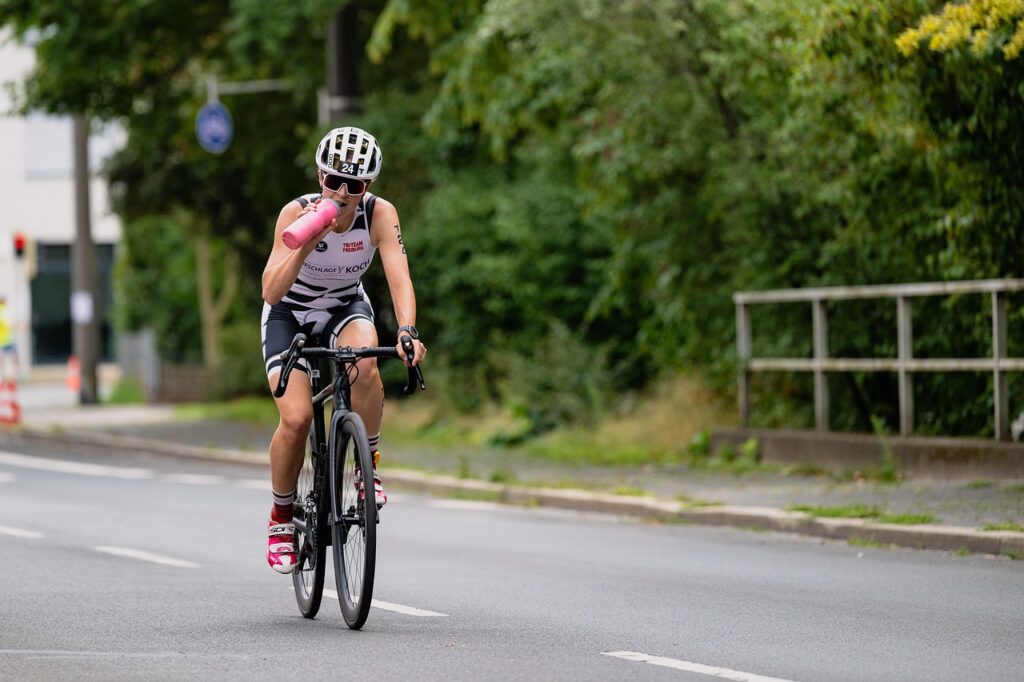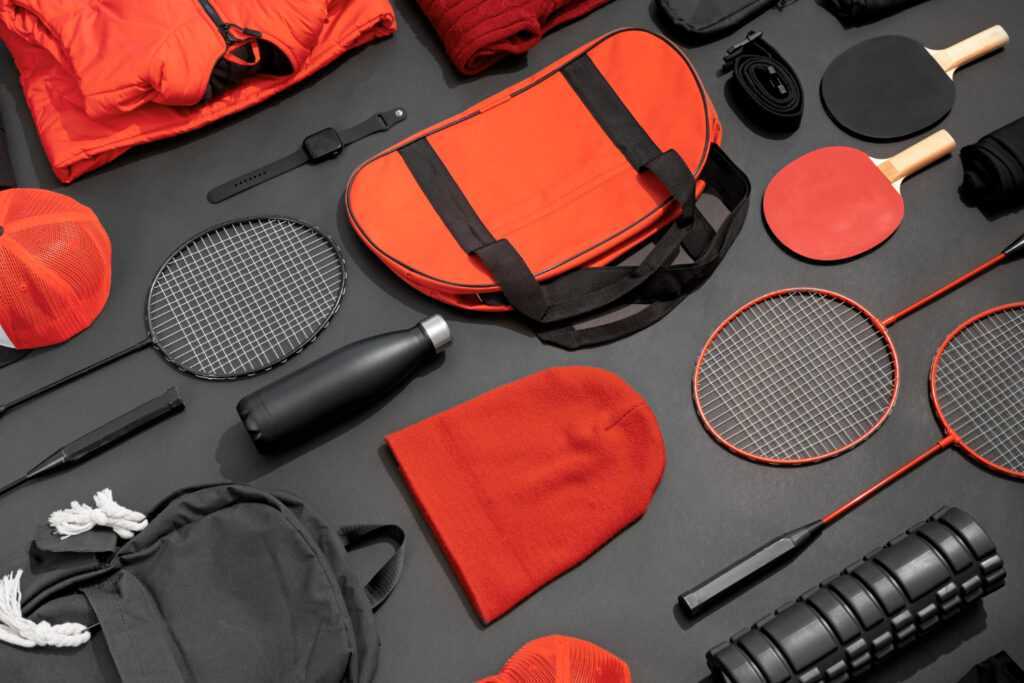Introduction
In horse racing, jockeys play a key role in guiding horses to victory. Their gear is just as important as their skill. Jockey outfits are carefully designed to be functional, fit well, and help jockeys perform their best. Every part of a jockey’s outfit, from the light materials to the streamlined shape, helps them ride better during intense races.
This article will look at the main parts of jockey clothing, explaining how each piece helps keep jockeys safe, comfortable, and able to perform well on the track. We’ll talk about everything from the colorful jerseys to the special shoes, and explore the science behind these important racing uniforms. We’ll also see how new technology and materials have made jockey gear better, improving both safety and performance.
| Key Takeaways |
| – Jockey outfits mix old traditions with new technology
– Each part of the outfit has specific safety and performance jobs – Weight and shape are very important in the design – Rules make sure the sport is fair and safe for everyone – New materials and smart fabrics are changing how outfits will be made in the future |
A Brief History of Jockey Apparel
Origins of the Uniform
Jockey outfits horse racing as we know them started in the 1700s. Colorful tops, called silks, were used to tell horses and riders apart from far away. The first uniforms were made of wool, which was tough but heavy and hot. Over time, jockey clothes changed as new fabrics were invented and people learned more about what athletes need to perform well.
The biggest change was switching from natural materials like wool to man-made fabrics. Modern racing silks are now made from light, breathable materials that help jockeys stay cool and move easily during races. This change has been really important because it lets jockeys stay at their best throughout long, hard races, where every bit of comfort can affect who wins.
Standardization in Modern Racing
Today, racing organizations around the world have rules about how jockey outfits should be made, how safe they need to be, and what materials can be used. These rules make sure all riders are protected while keeping the traditional look of the sport. They also help make the sport fair by making sure no jockey gets an advantage from their equipment. Many people are involved in making these rules, including jockeys, trainers, safety experts, and the companies that make the equipment. They all work together to balance tradition, safety, and helping jockeys perform their best.
Key Components of a Jockey Outfit
Racing Silks (Jersey or Top)
Racing silks are the bright tops jockeys wear. They’re important for several reasons:
- Identification: Each set of silks shows which owner or stable the horse belongs to, making it easy to tell who’s who during a race.
- Visibility: The bright colors help people see the jockeys on the track, which is safer and helps everyone follow the race better.
- Tradition: Many silk designs have been used for generations, connecting today’s races to the sport’s history.
Jodhpurs or Breeches
Jockeys wear special pants called jodhpurs or breeches. These are important because:
- They’re flexible, letting jockeys move easily on the horse.
- They’re very light, which is important because jockeys have to meet strict weight limits.
- They’re tough in the areas that rub against the saddle the most.
These pants are cut in a way that stops them from bunching up or rubbing during fast races. Some new designs even have special fabric that helps support muscles and reduce tiredness.
Safety Vest
The safety vest is really important for protecting jockeys. These vests are made to absorb impact if a jockey falls or crashes. They have:
- Padding that can take a lot of force but is still light.
- Materials that let air through to keep jockeys from getting too hot.
- Straps that can be adjusted so the vest fits well and protects the right areas.
These vests have to meet strict safety rules. They’re made to protect jockeys as much as possible without making it hard to move or adding too much weight.
Helmet and Goggles
Protecting a jockey’s head is super important. Jockey helmets have to meet strict safety rules. They:
- Protect against impacts to prevent head injuries.
- Have air vents to keep jockeys cool.
- Are made to be as light as possible while still being safe.
Goggles are also crucial. They protect jockeys’ eyes from wind, dust, and stuff that gets kicked up during a race. They’re made to stay clear in all kinds of weather so jockeys can see well at high speeds.
Gloves and Boots
Jockey gloves are made for gripping the reins well. They usually have:
- Textured palms for a better grip.
- Materials that let sweat evaporate to keep hands dry.
- Flexibility so jockeys can control the reins precisely.
Racing boots need to support the foot well but also be very light. They often have:
- Strong toes and heels to protect those areas.
- Thin, bendy soles so jockeys can feel the stirrups better.
- Support around the ankle to help prevent injuries.
The Science Behind Fit and Fabric
Weight Matters
In horse racing, every ounce counts. Jockeys have to meet strict weight limits, so their gear needs to be as light as possible without being unsafe. Scientists are always working on new, super-light materials that are still strong and protective.
Aerodynamics and Stretch
Modern jockey outfits are designed to cut through the air easily. They fit close to the body to reduce drag and are made from stretchy materials so jockeys can move freely. Common features include:
- Smooth designs that don’t catch the wind.
- Stretchy fabrics that let jockeys move in any way they need to.
- Special panels that let air through without making the outfit less streamlined.
Climate Considerations
Races happen in all kinds of weather, from really hot to cold and rainy. Jockey gear needs to work well in all these conditions. Modern fabrics often:
- Pull sweat away from the skin to keep jockeys dry.
- Help control temperature in extreme heat or cold.
- Dry quickly if they get wet in rainy weather.
How Outfits Influence Performance on the Track
Ergonomics and Movement
The design of jockey outfits directly affects how well a rider can perform. Important design features include:
- Seams that don’t restrict movement.
- Waistbands that can be adjusted for a good fit.
- Custom-made outfits to fit each jockey perfectly.
These features help jockeys stay in the right position and make quick moves during a race without their clothes getting in the way.
Psychological Edge
When jockeys feel good in their gear, they can focus better on the race. Knowing they have high-quality equipment can make jockeys feel more prepared and professional, which can help them perform better.
Visibility and Coordination with Horse Gear
Jockey outfits often match the horse’s equipment. This coordination:
- Makes it easier for people to see and follow specific horses and riders during a race.
- Creates a unified look that represents the horse’s owner or stable.
- Might help horses recognize their riders more easily before a race.
Regulation and Safety Standards
What Racing Authorities Require
Racing organizations have strict rules about jockey equipment to keep everyone safe and make sure races are fair. Common rules include:
- Safety vests that can protect against impacts.
- Helmets that have been tested and approved by safety experts.
- Racing silks that are registered and easy to tell apart.
- Boots that meet safety and design standards.
These rules are updated regularly to include new safety technologies and address any new concerns in the sport.
Penalties for Non-Compliance
If jockeys don’t follow the equipment rules, they can face serious consequences, such as:
- Fines for small rule breaks.
- Being disqualified from races for serious safety violations.
- Not being allowed to race for a while if they break the rules repeatedly.
These strict rules make sure everyone follows safety standards and keeps the sport fair and safe.
Choosing the Right Gear: What Professionals Look For
Professional jockeys and their teams are very careful when choosing equipment. They think about:
- Fit: Making sure everything is the right size for the best performance and safety.
- Durability: Choosing materials that can handle tough racing conditions.
- Weight: Picking the lightest options that are still safe, because every gram matters in racing.
- Comfort: Selecting gear that won’t distract them during races.
Many top jockeys get custom-made gear that fits them perfectly. But there are also good ready-made options for those who prefer standard equipment.
Innovations and Future Trends in Jockey Apparel
Smart Textiles
In the future, jockey outfits might include smart fabrics with built-in sensors. These could:
- Keep track of a jockey’s heart rate and body temperature during races.
- Give instant feedback on how the jockey is sitting and moving.
- Change to suit different weather conditions automatically.
While these technologies are still being developed, they could really change how jockeys train and race.
Sustainability in Racing Gear
As people become more concerned about the environment, the racing industry is looking at more sustainable options for jockey gear. Future trends might include:
- Using recycled materials to make racing equipment.
- Creating fabrics that can break down naturally after they’re no longer usable.
- Making sure the people who make the gear are treated fairly and materials are sourced responsibly.
These efforts aim to make the sport better for the environment while still maintaining high standards for racing equipment.
Conclusion
Jockey outfits horse racing are a mix of old traditions and new technology. Every part of a jockey’s gear, from the colorful tops to the high-tech safety equipment, plays a big role in keeping them safe and helping them perform well. As racing continues to change, so will the equipment jockeys use.
New materials, smart fabrics, and eco-friendly manufacturing are likely to shape the future of jockey apparel. But the main goals will stay the same: to give riders gear that’s safe, comfortable, and helps them perform their best. The challenge will be to balance these new technologies with the traditions that make horse racing special.
For anyone involved in horse racing, understanding the importance of good jockey outfits is key. By choosing gear that works well, fits right, and helps performance, jockeys can make sure they’re ready for the challenges of this exciting sport. As we look to the future, it’s clear that improvements in jockey apparel will continue to play a big part in making horse racing safer and more exciting for everyone involved.




